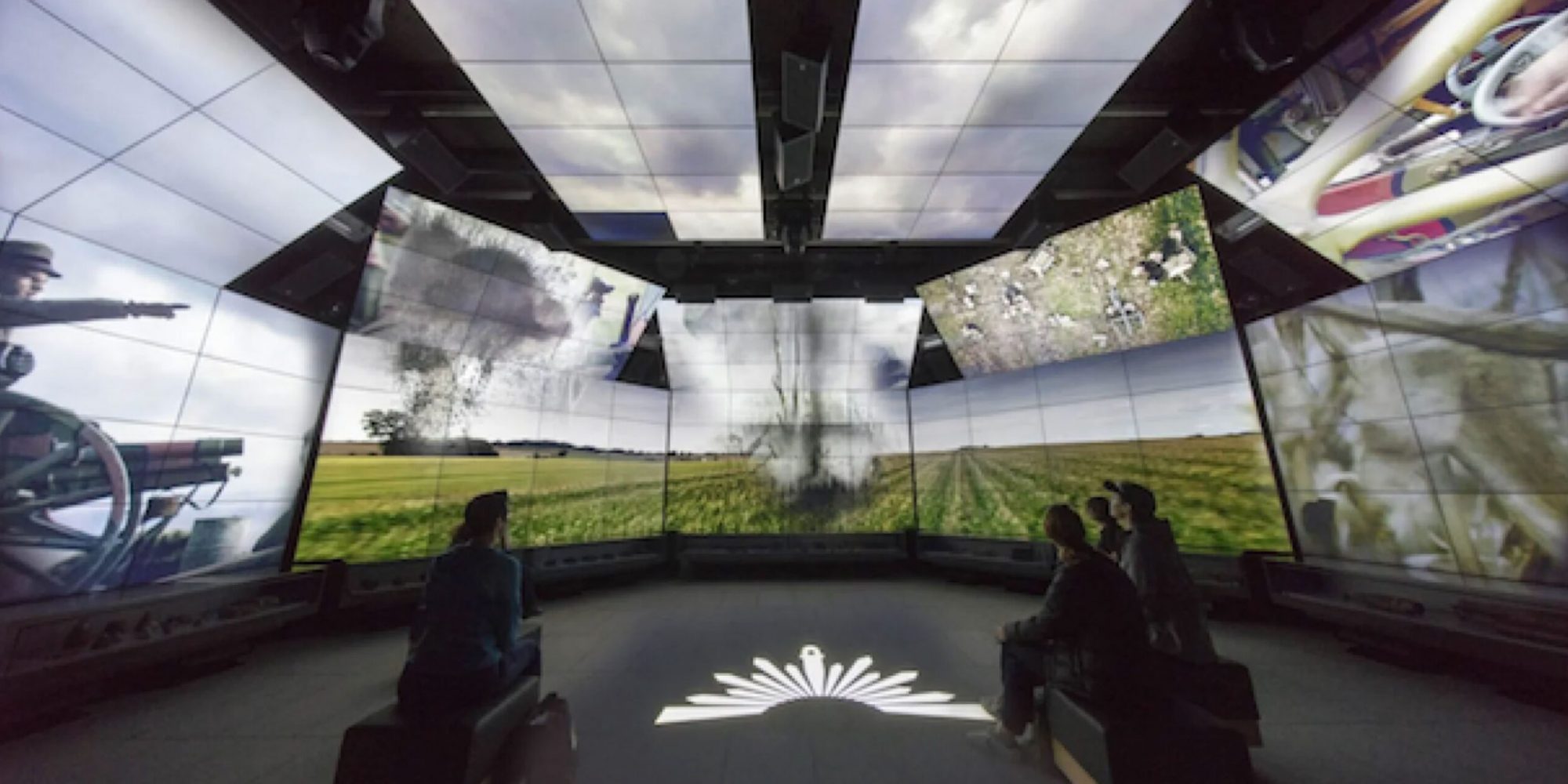"Very early on Transpire understood the complexity of the full BYOD multimedia we were trying to build and approached it with a problem-solving attitude. The outcome is a world-class BYOD technology solution that will ensure visitors are immersed in these important stories."
– Ian Fletcher, Executive Director, Overseas Projects at Department of Veterans’ Affairs. Tweet
The Challenge
Set on the grounds of the Villers-Bretonneux Military Cemetery in northern France, and adjacent to the Australian National Memorial, the Sir John Monash Centre (SJMC) tells Australia’s story of the Western Front in the words of those who served.
Established by the Department of Veterans’ Affairs (DVA), SJMC helps visitors gain a better and deeper understanding of the journeys that ordinary Australians went through using interactive multimedia installations.
The DVA wanted visitors to be able to download an iOS or Android app and navigate the 480-square metre gallery at their own pace, in their own language. This was so that the centre didn’t have responsibility for lots of different devices and could deliver a unique experience to every visitor.

Solution – User Experience
With SJMC located over 16,000 kilometres from Transpire’s office in Melbourne, the UX/design team needed a unique approach to testing and validating their ideas. This was made more difficult by the fact visitors would behave differently depending on whether they walking around the grounds outside SJMC or interacting with the immersive installations inside.
With the help of external users, Transpire overcame these obstacles by carrying out tests in custom-built environments based on SJMC. For example, geofencing and other tech solutions were set-up at a nearby park to replicate Villers-Bretonneux Military Cemetery, while a small-scale version of the SJMC exhibition space was created inside the Transpire office.
The user experience had to feature a ‘universal design’ and be accessible to as many people as possible. Central to this was translating the app’s English content into French and German for a truly localised experience.
It was a continual process of improving words and terms within the app, implementing labels than would make sense to the user, and making the SJMC journey more universally accessible.
However, translating the app from English to French and German had a knock-on effect for the layout and design. This called for the help of native speakers, who could suggest more authentic terminology and language rather than literal translations.
Transpire also requested assistance from both the French and German embassies to identify suitable users for testing the app, and to walk through the experience alongside designers for last-minute feedback.
Throughout the project, Transpire had to pivot on design or go back to the drawing board with certain ideas. While the team knew this would take time away from what they were responsible for delivering, it ultimately led to a much better experience. The more Transpire questioned what was happening, the more SJMC benefited from human-centred design thinking.
For Transpire, collaboration between the product owner, external users, and third-party vendors was paramount in the success of SJMC. To begin with, the project was simply a collection of ideas from multiple stakeholders. But by opening up the design process, Transpire was able to establish a cohesive framework, empower individuals to contribute their own expertise, and produce an intuitive multimedia experience.

Solution – Technology Development
Transpire’s multimedia solution for SJMC needed to distribute and deploy content, which was designed and produced in Australia and New Zealand, across multiples systems in France. Due to the centre’s complex environment, comprising 450 screens of various sizes, configurations, and operating systems, it also had to be quick and reliable when delivered via the cloud.
After discovering that commercially available solutions had limitations or restrictions, Transpire created its own integrated multimedia solution to coordinate and communicate with every piece of technology in the centre. From the show controller to the building management system, Transpire pulled every thread together into one coherent solution.
In order for visitors to access SJMC’s multimedia content, Transpire developed both iOS and Android apps, which would proactively cache content, cue up relevant multimedia, and provide a link between user smartphones and the centre’s screens.
As visitors move through the centre, over 150 Bluetooth beacons determine their location, prompting a multimedia server to establish a connection between the app, the content, and the screens.
But because of the gallery’s small size, the volume and density of signal traffic from a forecasted 110,000 visitors a year posed a potential problem. This required another unique solution, as Transpire CEO Luke Smorgon explained:
“Our team addressed common beacon challenges around refraction, reflection, obstruction and different electrical congestion that no one else in the world appears to have solved,” he said. “After scouring the world and consulting with experts to see if anyone else had cracked these issues, we set out to build our own.”
For the Bluetooth beacons, Transpire engineered custom-made antennae to isolate, amplify, and shape the radio frequency, decrease signal leakage, and improve accuracy to each visitor’s smartphone.
A complex, layered positioning algorithm was developed to help deal with the unique challenges of SJMC’s physical environment. When visitors move around the centre, the app will continually refresh a list of what content is available nearby and allow them to dictate their own experience.
With the ability to track movement, SJMC benefits from data as precise as how many visitors step through each zone and how long people stay in front of a particular screen, providing valuable analytics for the curatorial process.
“By far the most modern and in my opinion the best educational centre on the Great War. Unbelievable use of technology. Outstanding."
– Sir John Monash Centre app user review Tweet
Impact
On 24th April 2018, Sir John Monash Centre was officially opened in front of dignitaries including the Prime Minister of Australia Malcolm Turnbull and the Prime Minister of France Édouard Philippe, along with descendants of the First World War soldiers who fought on the Western Front.
5 design awards
Recipient of Two Gold, Two Silver, and the Design Champion Award at Melbourne’s DRIVENxDESIGN Awards 2018.
110,000 visitors
Sir John Monash Centre is expected to receive 110,000 visitors every year.
5 star rating
Sir John Monash Centre currently has a rating of 5 stars out of 5 on TripAdvisor.




